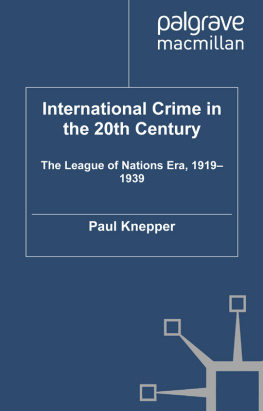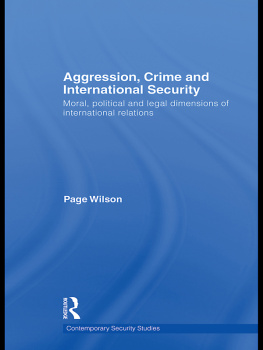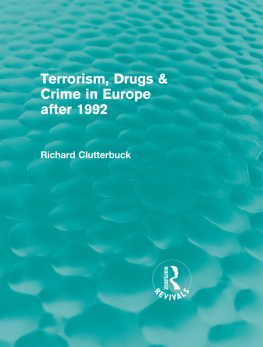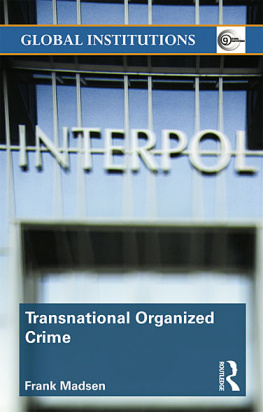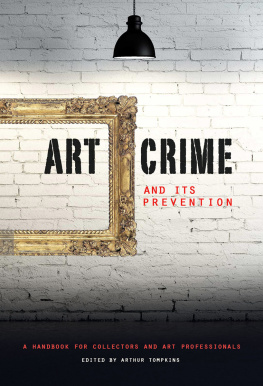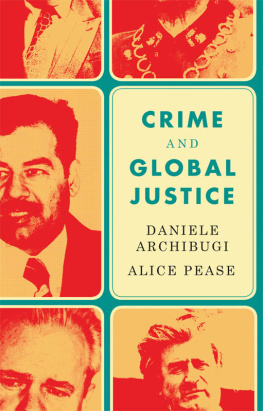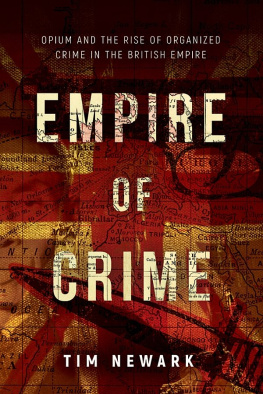International Crime in the 20th Century
Also by Paul Knepper
THE INVENTION OF INTERNATIONAL CRIME
A Global Issue in the Making, 18811914
International Crime in the
20th Century
The League of Nations Era, 19191939
Paul Knepper
University of Sheffield, UK


Paul Knepper 2011
All rights reserved. No reproduction, copy or transmission of this publication may be made without written permission.
No portion of this publication may be reproduced, copied or transmitted save with written permission or in accordance with the provisions of the Copyright, Designs and Patents Act 1988, or under the terms of any licence permitting limited copying issued by the Copyright Licensing Agency, Saffron House, 610 Kirby Street, London EC1N 8TS.
Any person who does any unauthorized act in relation to this publication may be liable to criminal prosecution and civil claims for damages.
The author has asserted his right to be identified as the author of this work in accordance with the Copyright, Designs and Patents Act 1988.
First published 2011 by
PALGRAVE MACMILLAN
Palgrave Macmillan in the UK is an imprint of Macmillan Publishers Limited, registered in England, company number 785998, of Houndmills, Basingstoke, Hampshire RG21 6XS.
Palgrave Macmillan in the US is a division of St Martins Press LLC,
175 Fifth Avenue, New York, NY 10010.
Palgrave Macmillan is the global academic imprint of the above companies and has companies and representatives throughout the world.
Palgrave and Macmillan are registered trademarks in the United States, the United Kingdom, Europe and other countries
ISBN 978-0-230-28429-6 hardback
This book is printed on paper suitable for recycling and made from fully managed and sustained forest sources. Logging, pulping and manufacturing processes are expected to conform to the environmental regulations of the country of origin.
A catalogue record for this book is available from the British Library.
A catalogue record for this book is available from the Library of Congress.
10 9 8 7 6 5 4 3 2 1
20 19 18 17 16 15 14 13 12 11
Printed and bound in Great Britain by
CPI Antony Rowe, Chippenham and Eastbourne
Contents
Acknowledgements
A number of people contributed to this book in various ways. My thanks for encouraging comments from colleagues at several conferences where I presented early versions of chapters: the European Society of Criminology Conference at the University of Lige; the North/South Irish Criminology Conference at the University of Ulster; and the Crime and the City Symposium at the University of Sheffield. I was able to try out material in lectures at the University of Bremen, thanks to Michael Thiele of the Faculty of Social Sciences, and the University of Malta, thanks to Jacqueline Azzopardi and Sandra Scicluna. Michael Berkowitz, Institute of Jewish Studies, at University College London, and Richard Wetzell and Kerstin Brckweh of the German Historical Institute, Washington, DC, gave me the chance to present parts of chapters. The assistance from archivists in various libraries and collections has been invaluable: Bodleian Library, British Library, International Institute of Social History, the Library of Congress, the League of Nations Archives at the United Nations Library and the University of Minnesotas Archives and Special Collections. The staff of the reading room at the British Copyright Library in Yorkshire made every day there pleasant and productive. Most of all, I would like to thank Cathryn Knepper.
Introduction
We have a tendency to believe that, owing to technological, political and cultural developments in recent years, we are the first generation to experience crime as a global problem. But crime as an international issue has a significant provenance and we can better understand our current situation by appreciating its historical context. By looking back to how the age of international crime began, and proceeded, is it possible to gain a deeper understanding not only of the problems that confront us now, but also of the international institutions set up in response.
Crime first emerged as an international issue in the final decades of the nineteenth century when white slave trading, professional criminality, anarchist outrages and alien criminality came to the attention of police, politicians, and journalists. Between 1881 and 1914, the appearance of world shrinking technologies, including steamships, undersea cables and telegraphs, combined with the activities of empires and the rise of multi-national corporations, to promote awareness of crime as an international concern. Governments across Europe sent representatives to conferences for suppression of the white slave trade, defence against anarchism and police cooperation. The British government enacted national legislation to combat white slave trafficking and alien criminality, and governments across Europe passed laws to pre-empt anarchist conspiracies. The decades before the Great War were also a period for international voluntary organisations such as the Society for the Suppression of the Opium Trade, International Bureau for Suppression of Traffic in Women and the Jewish Association for the Protection of Girls and Women. These organisations pressed governments for action. When the war ended, they could boast considerable success, having placed their concerns on the international public agenda adopted by the League of Nations.
At the same time, this study does not concentrate solely on the League of Nations but examines the interwar outlook concerning globalisation of crime. Political leaders and social critics in the 1920s and 1930s noticed goings-on across borders and surmised that these generated crime problems in numerous countries at the same time. Contemplating the aftershock of the first world war established a paradigm for understanding why global events were important for national and local publics. In a sense, this book concerns one set of global anxieties and the way in which the public intellectuals of a generation brought these anxieties into everyday life.
Mathieu Deflem, who develops an explanation of international police cooperation, makes an important point when he refers to the myth of international crime. He characterises international crime as a professional myth promoted during the 1920s by police in Europe and North America to justify centralisation of authority.
The Hungarian chemist and social philosopher Michael Polanyi, who survived the world wars by emigrating to Germany before emigrating to England, thought a great deal about the meaning of science in society. While in Berlin, he had worked at the Kaiser Wilhelm Institute for Physical Chemistry, directed by Fritz Haber (and would have known about Habers role in developing the poison gas first used in warfare at Ypres in 1915). Polanyi regarded scientific knowledge as the source of illusion in the modern world. In the days when an idea could be silenced by showing that it was contrary to religion, theology, was the greatest single source of fallacies. Today, when any human thought can be discredited by branding it unscientific, the power exercised previously by theology has passed over to science; hence, science has become in its turn the greatest single source of error.
Scientific understanding served as the point reference for the leaders of government agencies, voluntary organisations and international institutions. Interwar intellectuals worried about the effect on crime of immigration and economic crises, about the side effects of technologies, such as aeroplanes, which enabled novel means of victimisation. They worried about cinema and the effect of this new amusement on the moral development of young people. Social science became a means for response. The language of psychoanalysis became a way of understanding violent outbursts by soldiers and terrorists, economics the means of analysing markets in drugs and women. Criminologists, who claimed special scientific expertise in explaining criminal behaviour, weighed-in on the widest range of issues, from crime waves and gangsters, to anarchists and political crime.research techniques developed in the American public health movement, the first effort to bring a social-scientific analysis to a global crime problem.
Next page
